Humanity’s third interstellar object, 3I/ATLAS, is arriving now
First ‘Oumuamua, then Borisov, and now ATLAS have shown us that interstellar interlopers are real. Here’s what the newest one teaches us.
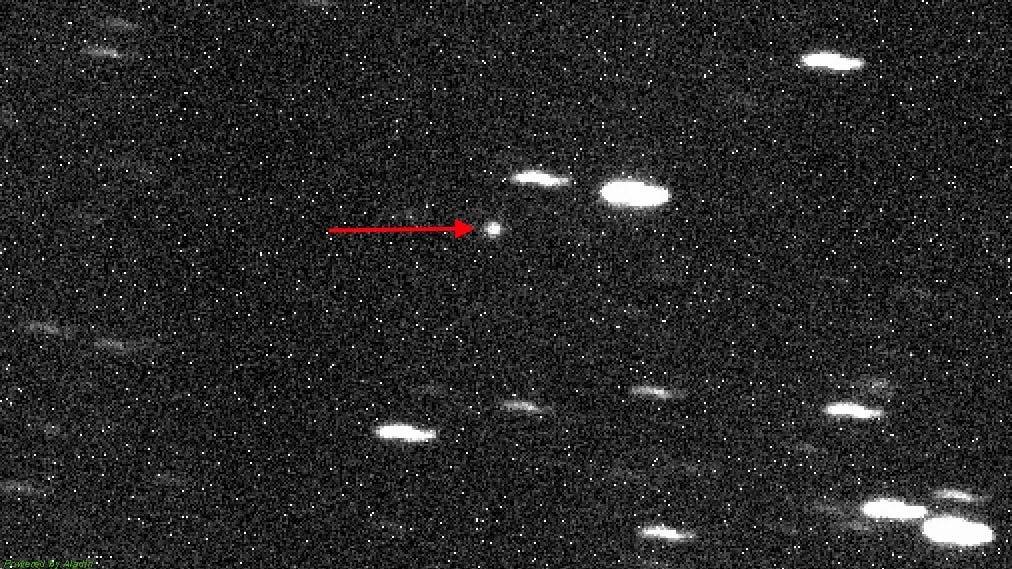
It wasn’t all that long ago — less than 10 years ago, in fact — that all the objects we had ever seen in the Solar System originated from within the Solar System. The planets, moons, and dwarf planets all revolved around their parent bodies according to Newton’s law of gravity: in elliptical orbits. Asteroids and Kuiper belt objects largely orbited the Sun in belts (with centaurs in between them), while occasional gravitational interactions would hurl one of those objects, or a farther-flung one from the Oort cloud, toward the inner Solar System, where they would brighten, potentially develop tails, create debris stream, and even sometimes would give rise to meteor showers. From antiquity until 2016, this was the story of every Solar System object we saw.
But then in 2017, all of that began to change. Our first interstellar interloper, ‘Oumuamua, was discovered: a small (about ~100 meters across), elongated, oddly accelerating object was moving far too quickly to have been a perturbed Solar System object. Instead, it must have had an interstellar origin. A couple of years later, Borisov was discovered: a much larger (nearly ~1 km across) object that also was clearly of interstellar origin, but that was much more ice-rich, developing a prominent tail and coma as it approached the Sun.
In early July of 2025, a third interstellar interloper was discovered: an object originally known as A11pl3Z, then rechristened as 3I/ATLAS after being confirmed to be of interstellar origin. It’s an exciting time for astronomy, and for learning about just what lies there beyond our own cosmic backyard.
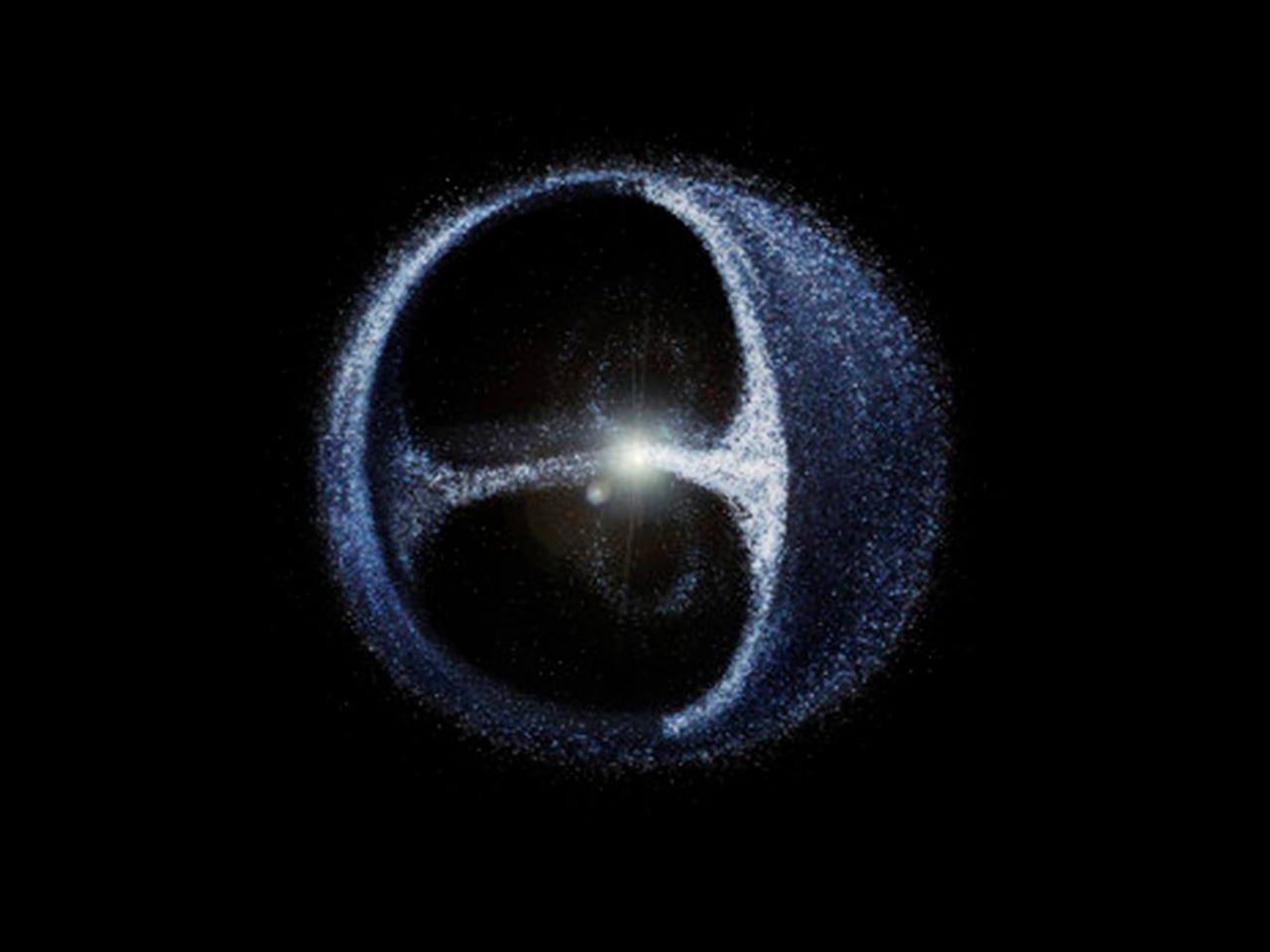
Although we normally think about our Solar System as a relatively isolated place — after all, the nearest star is more than 4 light-years away, or thousands of times more distant than the most distant Solar System object ever observed — it’s vital to remember that we live inside a very messy galaxy: the Milky Way. Within our cosmic home, it isn’t just stars that orbit the galactic center and speed through interstellar space, although they do just that, occasionally making close passes near one another. Instead, we also have to contend with:
ejected planets from stellar systems,
orphaned planets that were born without parent stars at all,
bodies that are a mix of rock-and-ice, formed when stellar systems formed but ejected due to gravitational interactions,
and the debris from planetary collisions, which don’t just form lunar systems, but can create enormous populations of “interstellar icebergs” that are highly differentiated remnants of onetime planetary crusts.
As these objects hurtle through interstellar space, they’re affected only by two major things: gravity and momentum, which can cause them to temporarily enter (and then leave) a variety of other stellar and planetary systems, and the effects of traveling through the particle-rich interstellar medium, which erodes and smooths them the same way a flowing river will erode and smooth any initially jagged rocks that enter into them.

In theory, we had long suspected that these interstellar objects routinely passed close to, and sometimes even passed directly through, our own Solar System. As we began tracking the three-dimensional motions of stars — including very faint, dim, low-mass stars — we began to realize that close passes were relatively common. Just 70,000 years ago, we learned that a brown dwarf pair of stars named Scholz’s star actually passed so close to our Solar System that it likely encountered our Oort cloud: a diffuse halo of bodies composed of ice-and-rock that extends from around ~1000 times the Earth-Sun distance out to more than a light-year away, or about ~100 times as far as the inner Oort cloud.
These types of encounters are relatively common, as a few of them are expected to occur for every star like our Sun every one million years or so. When they do happen, the gravity of the interloping object can perturb the low-mass objects in the Oort cloud, destabilizing them and leading to a potential comet storm downstream: tens or hundreds of thousands of years down the line.
But there are much greater numbers of smaller, lower-mass objects: asteroid-sized or comet-sized objects are millions, billions, or even trillions of times as common as stars within the galaxy. In order to try to find those, it’s vitally important to try to image the same portions of the sky over and over again, looking for any faint points of light that appear to shift position rather rapidly from moment-to-moment.
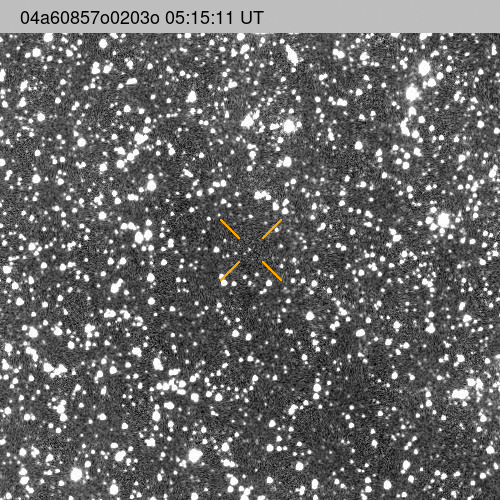
There are many observational endeavors dedicated to exactly this type of research. Pan-STARRS, the Zwicky Transient Facility, the Catalina Sky Survey, and the network of ATLAS telescopes (with one station from Tenerife in the Canary Islands, shown above) serve as three such examples. In the very near future, the Vera Rubin Observatory will become the world’s leading transient finder, from dimming and brightening stars to stellar outbursts to microlensing events to changes in active galaxies to objects passing through our Solar System and more. But even though it’s conducting science right now, other observatories still have a fighting chance to scoop their newer competitor.
And that’s precisely what happened in early July, when one of the ATLAS telescopes in Chile spotted a previously known object that appeared to be moving relative to the background of stars in our galaxy. Initially labeled A11pl3Z, this faint point of light was seen moving at about the distance that Jupiter is from our Sun, but moving more quickly than not only Jupiter moves, but than any object that originated from our Solar System could possibly move at this great a distance from the Sun. It was found originating from the region of the galactic plane: a region typically avoided by Pan-STARRS and the Catalina Sky Survey. And, at a current speed of ~61 km/s, it turns out that many of its properties are remarkably extreme.
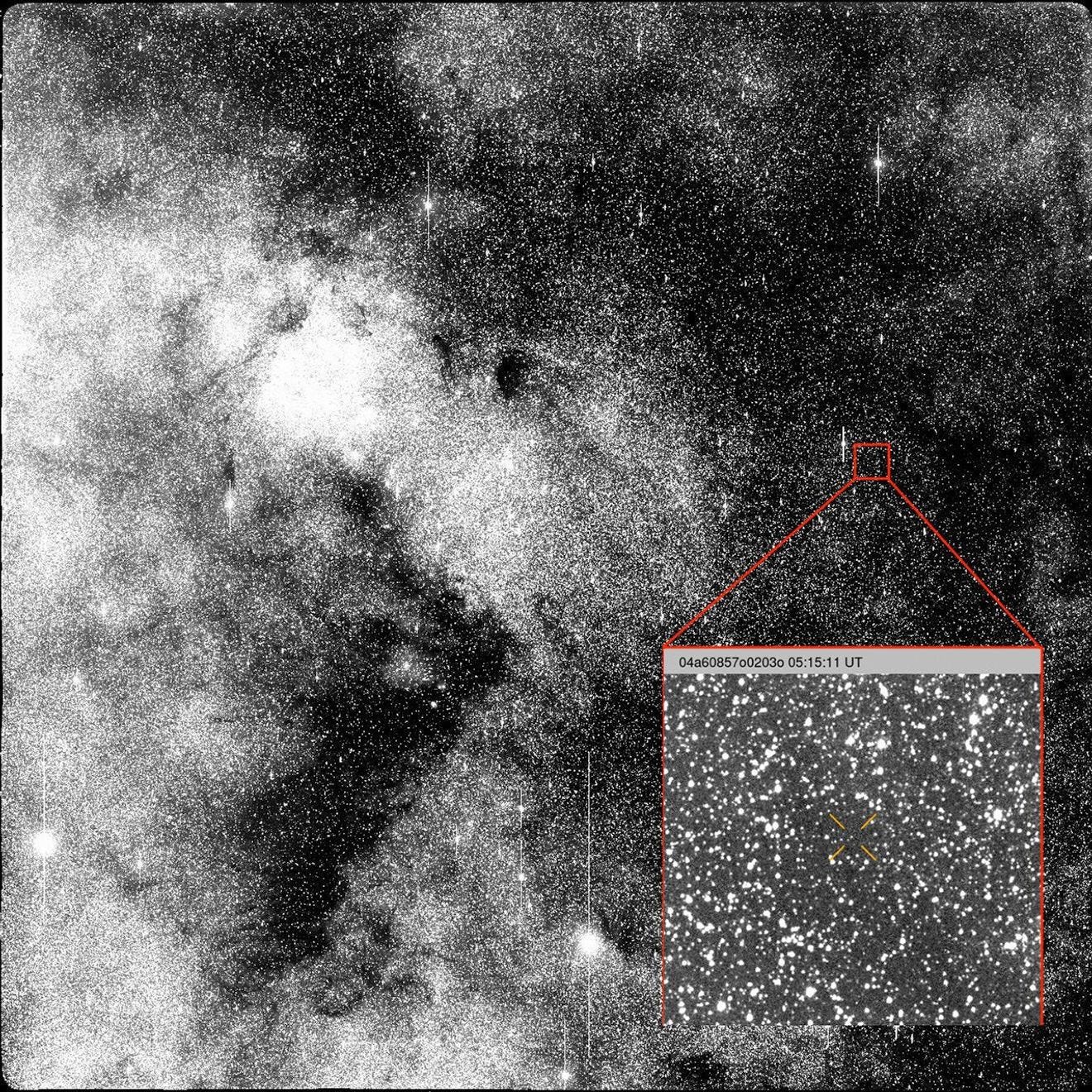
When we discuss orbits, we normally categorize them in one of four ways:
As circular, with an eccentricity of 0.
As elliptical, where it’s bound to the parent gravitating body (e.g., the Sun), with eccentricities between 0 and 1.
As parabolic, where it’s right on the border between being bound and unbound, with an eccentricity of exactly 1.
Or as hyperbolic, where it’s gravitationally unbound, with an eccentricity that’s greater than 1.
Some objects that occur naturally in our own Solar System do, in fact, take on hyperbolic orbits after a gravitational interaction with a planet like Jupiter or Neptune, with natural Solar System objects able to achieve eccentricities of up to about 1.05, at maximum. With only three exceptions, all objects measured within our Solar System had eccentricities of 1.05 or below, but those three exceptions sure are remarkable.
‘Oumuamua, the first object of interstellar origin ever discovered, had an eccentricity of 1.199, which was the largest known at the time of its 2017 discovery.
Borisov, the second interstellar object, was moving much more rapidly with respect to the Sun, and possessed an eccentricity of 3.36, which was far greater.
But this new object, after having its orbit characterized properly, was renamed 3I/ATLAS, and was discovered to have an eccentricity of approximately 6.2, the highest value ever discovered.

What’s even more remarkable is that we are seeing 3I/ATLAS as it’s still approaching us, when it’s quite far from perihelion, or its closest approach from the Sun. It will continue to get closer and closer to the Sun throughout the coming months, achieving perihelion sometime in October, where it should brighten further and continue outgassing, just as it’s been observed to be doing for some time. Earth won’t be all that close to it at the time, but Mars will be, providing an opportunity for our more farther-orbiting spacecraft (including MAVEN, Mars Reconnaissance Orbiter, and even the more distant Jupiter Icy Moons Explorer) to image it up close.
Although we didn’t know, initially, whether this object was going to be comet-like, with a tail and with volatile compounds being emitted and even ionized off of its surface, follow-up observations have directly revealed a coma — or halo — to 3I/ATLAS, indicating that it is, in fact, rich in volatile ices.
We can trace the orbit of 3I/ATLAS back beyond our Solar System to its point of origin, and find that it seems to be headed toward us from the galactic plane, and specifically, from the direction of the galactic center. This object is very large, especially in comparison to the other interlopers that had been previously seen. Where as ‘Oumuamua was only about 100 meters across, or barely half of the size of Seattle’s Space Needle, and Borisov was just under one kilometer, or around the height of the Burj Khalifa, 3I/ATLAS is huge: estimated to be between 10 and 30 kilometers across, or several times the size of the asteroid whose impact led to Earth’s last great mass extinction event some 65 million years ago.
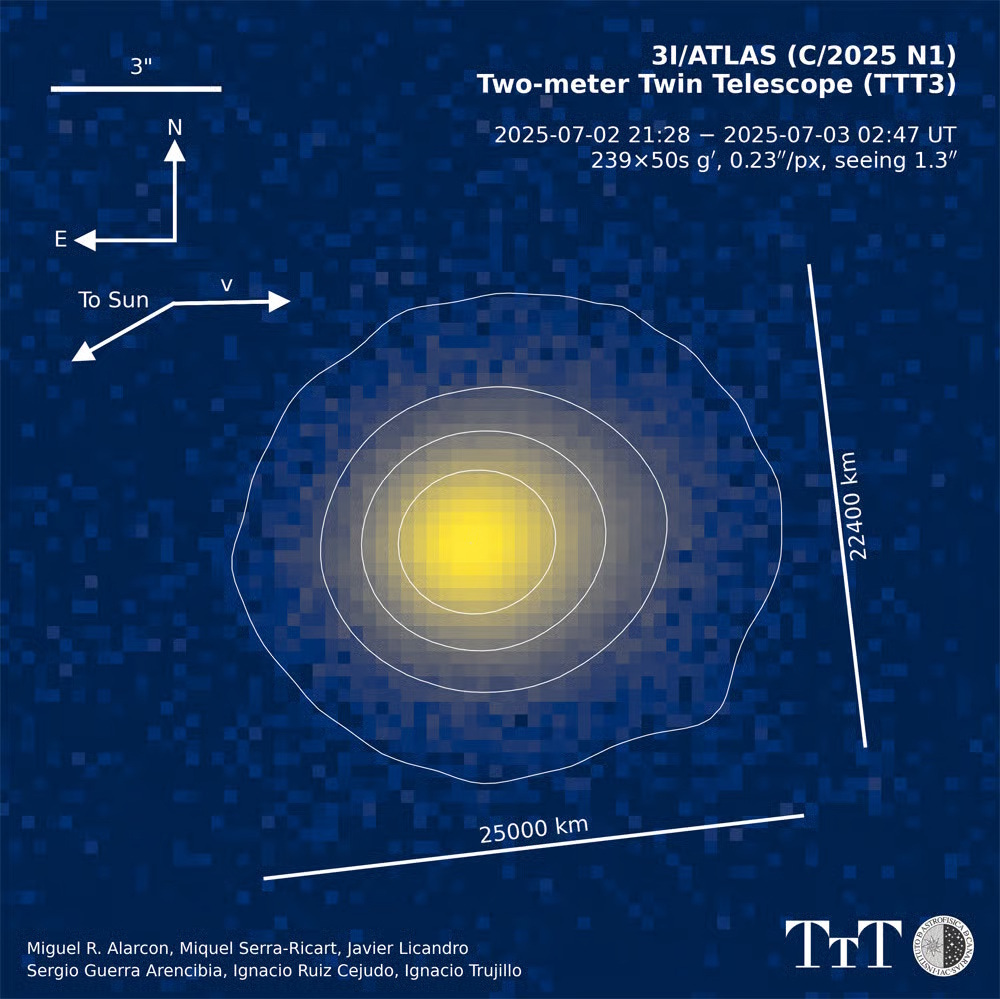
This teaches us something profound about the environment of the Milky Way: something we had long suspected, but had never had confirmation of. You see, from a small object like ‘Oumuamua, one that was only slightly too eccentric to be bound to our Solar System, we learned that there are definitely objects moving through our Milky Way with similar properties to the Sun: close to the local standard-of-rest, or the speed at which the stars of the Milky Way orbit around our galactic center. We learned that many of these objects had to be relatively young, or generated just a short time ago, as the maximum lifespan for an ‘Oumuamua-like object hurtling through the interstellar medium is only a few hundred million years, tops.
But for 3I/ATLAS, it’s a revolutionary new game. A combination of its properties, including:
its very large size, at 10 km or more,
its very fast speed relative to the Sun, of ~61 km/s even at nearly the orbit of Jupiter,
and its extremely high eccentricity, estimated at 6.2, or the highest ever recorded for an object in our Solar System,
instead suggests that this object is quite old, perhaps being even older than the Sun and our Solar System itself. A small light curve variation, showing variations in brightness of ~0.2 magnitudes (about 20%), further supports a comet-like interpretation for this object.
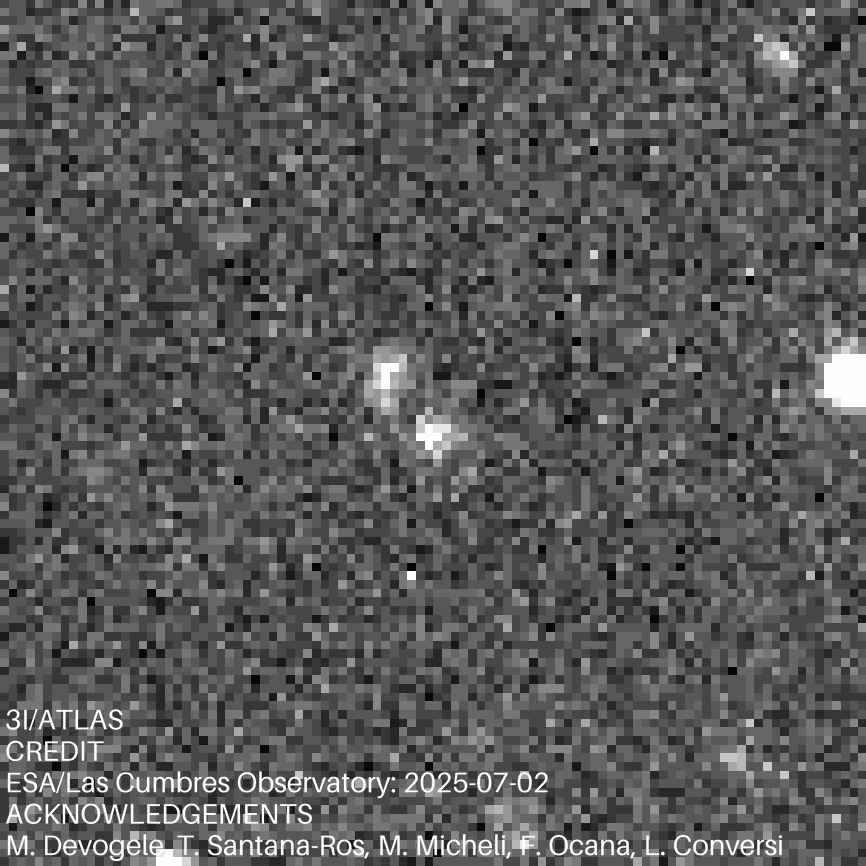
When we reconstruct its future orbit, and fold in how Earth and the other planets also revolve around the Sun, we run into a painful limitation: the realization that right as comet 3I/ATLAS reaches perihelion, or its closest approach to the Sun, when it should be at its brightest and most active, the Sun will pass right in between Earth and our line-of-sight to the object. From Earth, we can observe 3I/ATLAS until around September of 2025, and then we should be able to observe it again in November of 2025, but for the most critical window, where the activity of 3I/ATLAS is expected to peak, we won’t be able to use telescopes on Earth to observe it.
But what’s most remarkable of all is that this third interstellar object is likely just as different from the first two objects, ‘Oumuamua and Borisov, as those two objects were from one another, and we’re poised to learn just precisely how over the coming weeks and months.
The greatest differences between these different interstellar interlopers occur in the categories of size, speed, estimated age, light-curve variation, and suspected composition, although future differences may yet be detected that make these currently-identified differences pale in comparison. Below, the known features of our first three identified interstellar objects are contrasted.
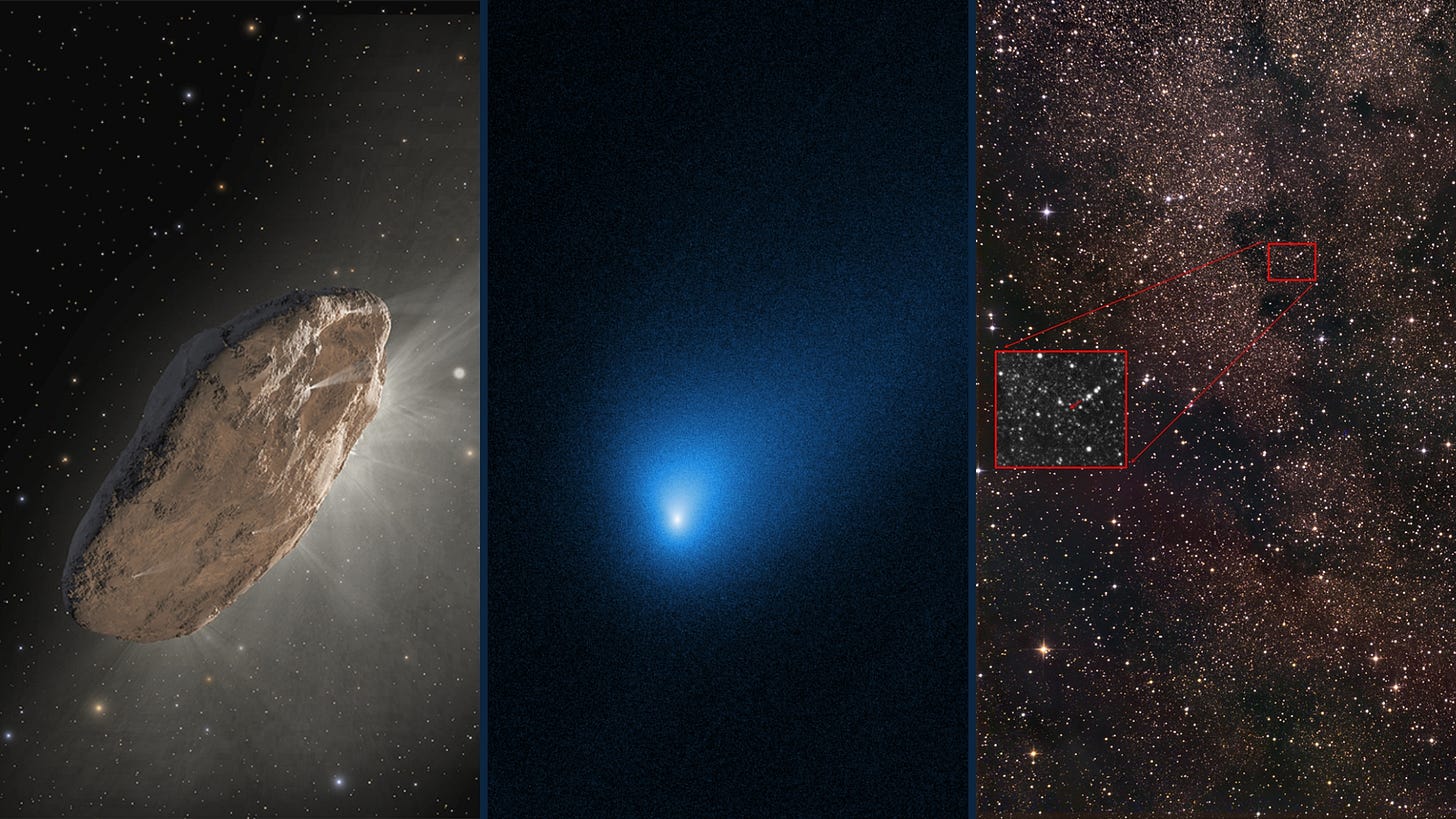
‘Oumuamua, discovered in 2017 was small, at ~100 meters, was mildly eccentric (e = 1.199), was moving at ~26 km/s relative to the Sun before even entering our Solar System, varied tremendously (by ~3.5 magnitudes, or a factor of ~25) in brightness over time, was red in color (reflecting less short-wavelength blue light than long-wavelength red light), and had no sign of a cometary tail, but appeared to exhibit some type of non-gravitational acceleration. It also was estimated to be young, at around ~100 million years of age.
Borisov, found a little over two years later, was larger, at just under ~1 km, was quite eccentric (e = 3.36), was moving at 32 km/s relative to the Sun before encountering our Solar System, displayed only a negligible brightness variation, was similarly red in color to ‘Oumuamua, emitted a prominent dust tail and coma, showing volatile elements and compounds normally seen in comets, but with much greater ratios of carbon monoxide to water than all other known comets, all of which originated from our own Solar System. There was no non-gravitational acceleration, and its age was estimated at around ~1 billion years.
But now 3I/ATLAS, found in 2025, represents a much more extreme object on the high-mass end. It’s between 10 and 30 kilometers, is very eccentric (e = 6.2), was moving very fast relative to the Sun at ~58 km/s before encountering our Solar System, displays a slight but detectable (~0.2 magnitudes, or ~20%) variation in brightness, is very similar in red color to not only ‘Oumuamua and Borisov, but also to common D-type asteroids found in our Solar System. It displays early, weak hints of cometary activity (far below what was seen with Borisov), and is estimated to be quite old: ~5 billion years or more in age.
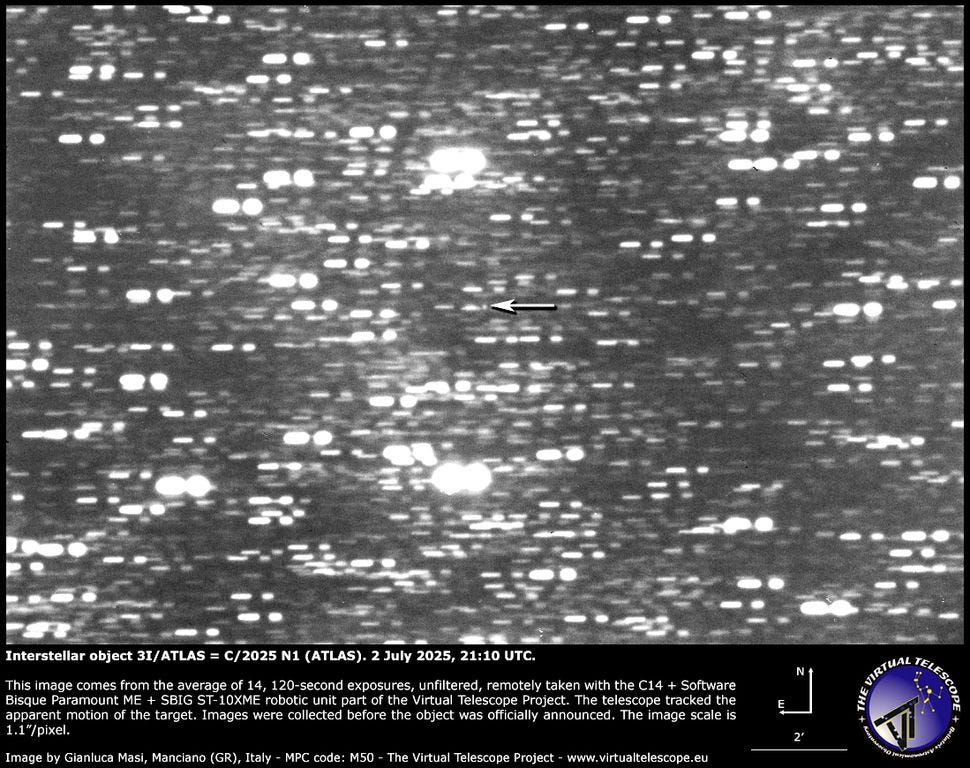
And now, we wait for further information from follow-up observations. 3I/ATLAS is still quite far from the Sun, and its activity will only intensify as it approaches the Sun even more closely: over the next three months, it will come to within about a third of its current distance from the Sun, heating up by more than 100 K over its current temperature in the process. If it’s full of ice-rich volatiles, we’ll see them sublimate. If it produces one or even two large tails, we’ll identify them. If it has different ratios of ices from common comets or from Borisov, we’ll detect it. And, perhaps most curiously, if it exhibits an anomalous, non-gravitational acceleration like ‘Oumuamua did, we’ll be able to detect that, too.
Of course, this is the first interstellar interloper to arrive since we’ve entered the JWST era, and from now until about early September, it will be within the field-of-view where JWST can image it and acquire a spectrum. Once November passes, JWST will have another opportunity, post-perihelion, to catch it again. What changes will we see? How will this object turn out to be similar to or different from the previous interstellar objects we’ve seen? And, with the Vera Rubin era now upon us, how many more objects — like this one, like ‘Oumuamua, or like Borisov — will we be destined to find? The beauty and fun of science is that we get to make these critical observations and discover the answers for ourselves. In the meantime, that’s what we know so far!
Ethan Siegel, Ph.D., is an award-winning theoretical astrophysicist who's been writing Starts With a Bang since 2008. You can follow him on Twitter @StartsWithABang.
Get more from Big Think:
Big Think | Mini Philosophy | Big Think Books | Big Think Business







Splendid revelations